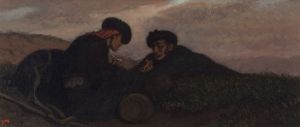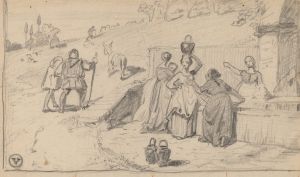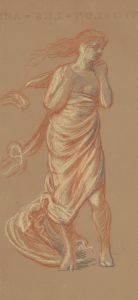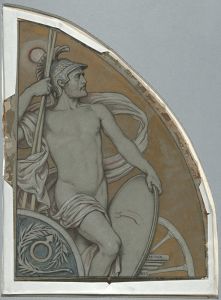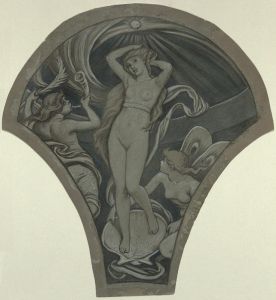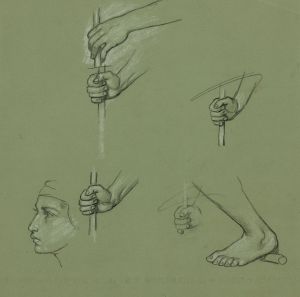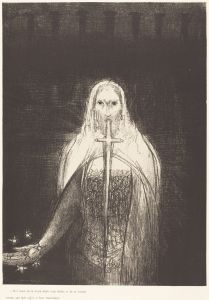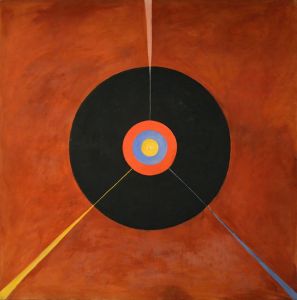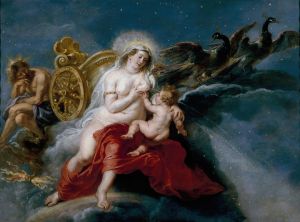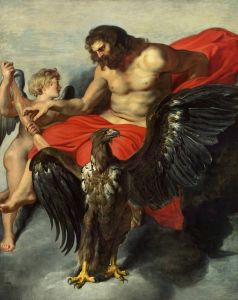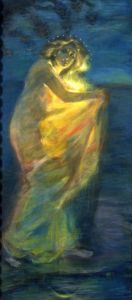
Cartoon for Jupiter
A hand-painted replica of Elihu Vedder’s masterpiece Cartoon for Jupiter, meticulously crafted by professional artists to capture the true essence of the original. Each piece is created with museum-quality canvas and rare mineral pigments, carefully painted by experienced artists with delicate brushstrokes and rich, layered colors to perfectly recreate the texture of the original artwork. Unlike machine-printed reproductions, this hand-painted version brings the painting to life, infused with the artist’s emotions and skill in every stroke. Whether for personal collection or home decoration, it instantly elevates the artistic atmosphere of any space.
Elihu Vedder, an American symbolist painter, created Cartoon for Jupiter as part of his artistic exploration of mythological and allegorical themes. Vedder, known for his intricate and imaginative works, often drew inspiration from classical mythology, literature, and esoteric symbolism. This particular piece, Cartoon for Jupiter, is a preparatory drawing or study, a common practice among artists to plan the composition and details of a larger or final work.
The term "cartoon" in this context refers to a full-scale drawing made as a guide for a painting, mural, or other artwork. It does not imply humor or caricature, as the modern usage of the word might suggest. Vedder's Cartoon for Jupiter likely served as a conceptual framework for a more detailed or finished piece, though it is unclear whether a final version of this work was ever completed.
The subject of the artwork, Jupiter, is the Roman equivalent of Zeus, the king of the gods in classical mythology. As a central figure in Roman religion and mythology, Jupiter was often depicted as a powerful and authoritative deity, associated with thunder, lightning, and the sky. Vedder's interpretation of Jupiter would have been influenced by his deep interest in mythology and his unique artistic style, which often blended classical themes with a dreamlike, symbolic quality.
Elihu Vedder's career spanned the late 19th and early 20th centuries, a period marked by a fascination with classical antiquity and the revival of mythological subjects in art. His works often reflect the intellectual and cultural currents of his time, including the influence of the Pre-Raphaelite Brotherhood and the Aesthetic Movement. Vedder spent much of his life in Italy, where he was deeply inspired by the classical art and architecture that surrounded him.
Cartoon for Jupiter is part of the collection of the Smithsonian American Art Museum in Washington, D.C. The museum holds a significant number of Vedder's works, showcasing his contributions to American art and his distinctive approach to symbolism and allegory. The piece is executed in charcoal and chalk on paper, a medium well-suited for preparatory studies due to its versatility and ability to capture fine details and tonal contrasts.
While specific details about the intended final work or the exact context of Cartoon for Jupiter remain limited, the drawing exemplifies Vedder's skill in draftsmanship and his ability to convey a sense of grandeur and mystery through his art.





